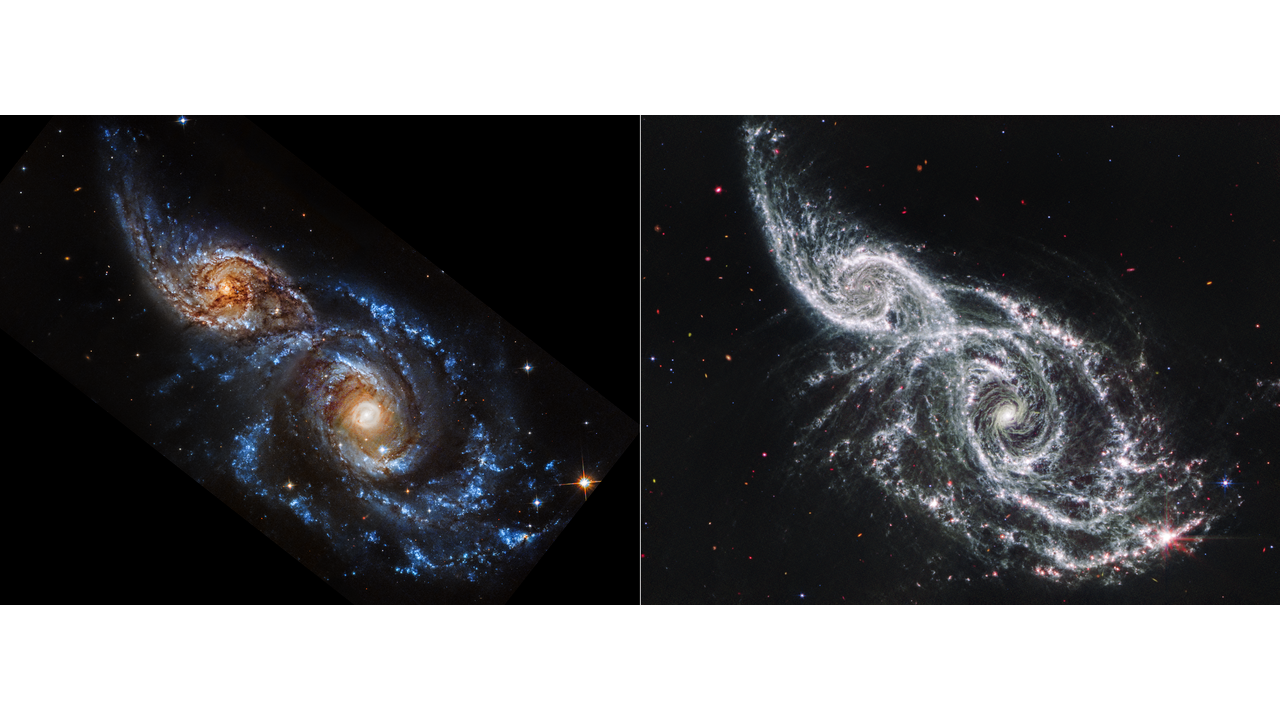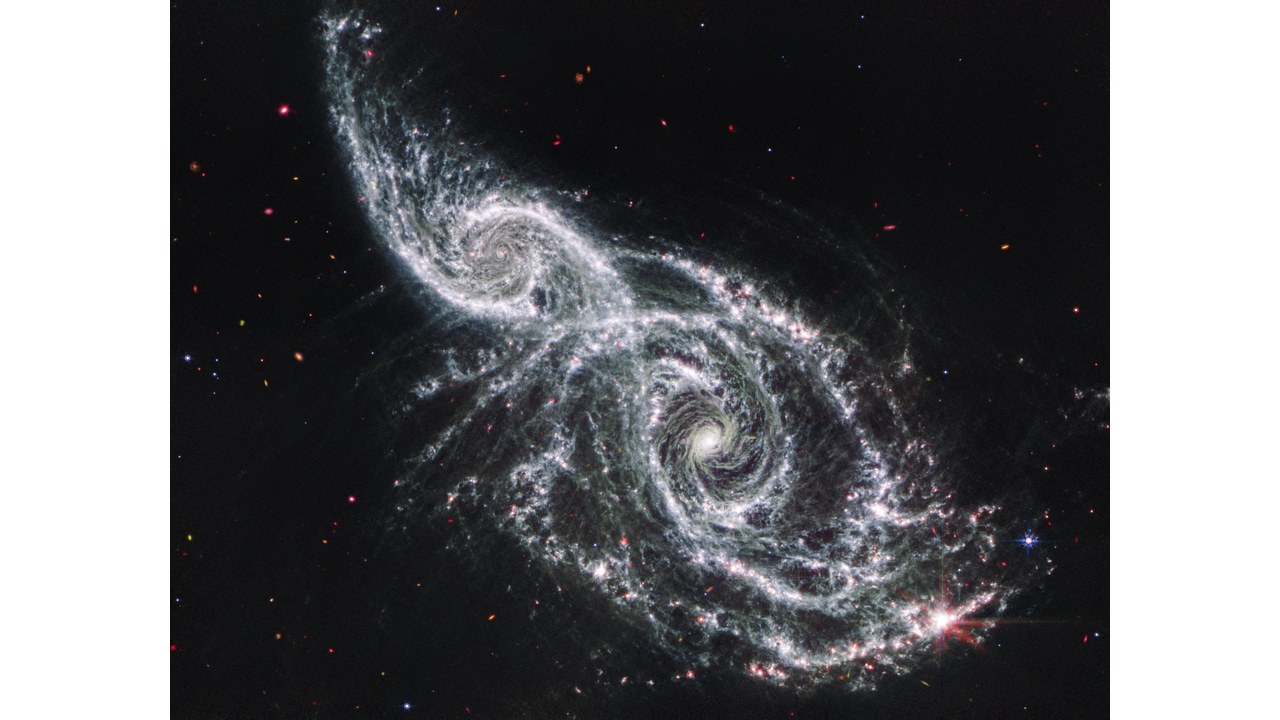Two of the world’s strongest house telescopes have spied a “spooky pair” of galaxies in deep house, staring out like a pair of “blood-soaked” eyes — and simply in time for Halloween.
The James Webb House Telescope (JWST) and Hubble House Telescope teamed as much as picture two spiral galaxies referred to as IC 2163 and NGC 2207 as they appeared tens of millions of years in the past. That is as a result of the pair of colliding galaxies resides some 80 million light-years away within the Canis Main constellation, the “Huge Canine,” which suggests the sunshine they emit takes that lengthy to succeed in Earth.
This pair of galaxies is presently within the strategy of colliding and merging into one, a course of that may take round a billion years. “Stare deeply at these galaxies,” the JWST crew wrote in a assertion accompanying the brand new pictures. “They seem as if blood is pumping by way of the highest of a flesh-free face. The lengthy, ghastly ‘stare’ of their searing eye-like cores shines out into the supreme cosmic darkness.” Spooky!
Under, we will see Hubble’s ultraviolet and visual mild observations of the galaxies on the left, and JWST’s mid-infrared mild observations of them on the proper. In Hubble’s picture of IC 2163 and NGC 2207, the star-filled arms of the spiral galaxies glow in blue, whereas the cores of each galaxies are seen in vivid orange.
Associated: Hubble House Telescope: Photos, info & historical past

In Webb’s picture, taken with its MIRI instrument, the chilly mud of each galaxies glows an in eerie white. On the backside of this picture, a vivid spot glows with the attribute eight-pointed star-like “diffraction spikes” produced by Webb’s mirrors. This area is “a location the place many stars are forming in fast succession,” based on the JWST crew’s assertion.

The smaller IC 2163 is within the strategy of shifting previous its bigger companion NGC 2207 within the ever-shrinking orbit between the pair in a cosmic dance that may proceed for a whole lot of tens of millions of years. IC 2163 made its closest brush with its neighbor some 40 million years in the past, based on NASA.
The 2 spiral galaxies produce roughly two dozen new stars the dimensions of our solar annually, based on the assertion, as fuel is churned up by the interactions between the galaxies. The pair has additionally hosted seven identified supernovas in current many years, a lot greater than the typical of 1 per 50 years seen in our personal galaxy, the Milky Means.
As these two galaxies develop nearer collectively and start to merge, their cores and arms would possibly mix collectively to kind new, reshaped arms and a bigger, brighter core. At this level, the dance between the 2 will calm, and star formation will gradual because the fuel and dirt surrounding the brand new merged galaxy cools.
However for now, as seen some 80 million years in the past, the cosmic ballet between NGC 2207 and IC 2163 continues, leaving us with some spooky pictures simply in time for the Halloween season.




